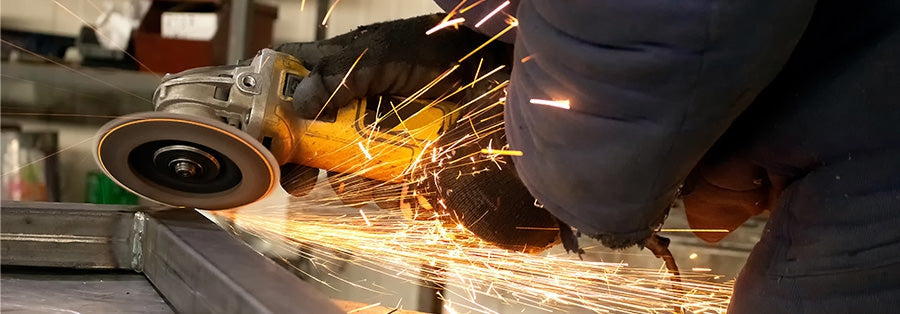24 hours of Darkness. It’s what they call a "Polar Night." The only UV light you’ve seen in the last day has been from your welding arc. From a survivability standpoint, humans have almost no business being this far north. From an opportunity standpoint though, there are ample reasons to brave the Arctic: mining operations, oil, research stations… Heck, even the world’s most secure vaults are kept in the Arctic.
What’s it like living and welding in some of the coldest, most remote places on earth? Find out for yourself as we look at striking an arc in subzero temperatures.
Two Different Worlds
Most people imagine the Arctic as a frozen wasteland, where your spit freezes the moment it leaves your mouth. And they’d be half right. “The Arctic” is more of a climate than a place, characterized by long, cold winters and short, cool summers. It spans across the top of Alaska, the Canadian Arctic Archipelagos, all of Greenland and the top of Russia.

It’d be poetically fitting to say the Arctic was the most “hot and cold” lover someone could ever have (literally). While the summers may be short, they offer a totally different experience from the winters. Temperatures are often above freezing, as high as 50°F. That’s not exactly flip-flop weather, but practically balmy compared to the -20°F average temperatures you’ll face during the winter.
While there are generally few or no trees, life still sprouts during the summer. But of all the most extreme comparables between the seasons, nothing stands out more than daylight. During the summers, you’ll often have days of almost complete sunlight. 11:30 pm can feel like 7 pm in mainland America. But in the winter, the reverse is true. You wake up in the dark, work in the dark and go home in the dark.
Cold Welding
As mentioned, the summers in the Arctic are often above freezing in many areas (as high as 50° F). A lot of you welders are probably saying to yourselves right now, “I weld in temperatures below that all the time.” But winter in the Arctic is a whole different world.
In some cases, welders have no choice but to work during the winter in the Arctic. While the major pipelines were being built during the middle and late 1900s, areas running through marshlands had to be done in winter as the ground was too soft for the equipment during other times of the year. Likewise, a lot of mining and oil equipment has to be maintained year-round.
Some welders working in the Arctic get (or need) the benefit of working in a heated, enclosed space. A lot of times, they might weld in what is essentially a pop-up tent that shelters the welder and their workpiece from the harshest parts of the environment.

In other cases, there’s no such luxury. Whether sheltered or not, usually pre-heating and careful temperature control are critical. With temperatures reaching as low as -50° F, metals behave differently than most people are used to. The actual specifics of pre-heating are determined by the process and the materials being used. Because even high-strength steel can become brittle at Arctic temperatures, most jobs in low temperatures have somewhat complex procedures in place to ensure that the end results are structurally sound.
Too Cold For Your Equipment?
Freezing temperatures aren’t just hard on the welder, but also the welding machine. Equipment used in the Arctic has to be rated for the conditions it’s expected to work in. For instance, the Lincoln Square Wave TIG 200 is rated to work in temperatures between 14°F~104°F.

Beyond low temperatures, moisture in the air can have an even stronger effect on equipment. In freezing, dry environments, every breath you take becomes water vapor in the air. Water (even small droplets) can cause shorts in electrical equipment not designed for use in those conditions. Likewise, moisture can collect in your materials, causing issues while welding. This is another reason why pre-heating and temperature control are often fundamental to welding in the Arctic.
While few of us will ever have to worry about striking an arc in sub-zero temperatures, it’s not uncommon to find yourself welding on hot and cold days. Cheap welding equipment can dramatically suffer performance quality in these cases. It’s just another reason to go with a brand that’s proven its reliability and endurance to generations of welders.

Such brands are all we stock at Welding Supplies from IOC. For over 100 years, IOC has been a part of the welding world, with roots going all the way back to the very first Indie 500. We’re proud to carry the tradition of making sure you have the best equipment for the task ahead of you. Just remember that all equipment manufacturers traditionally increase their prices in the early part of the year. So if you’ve been eye-balling some new gear, now is the time to act. Check out Welding Supplies from IOC for our full selection.





